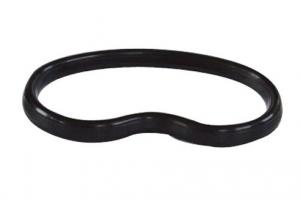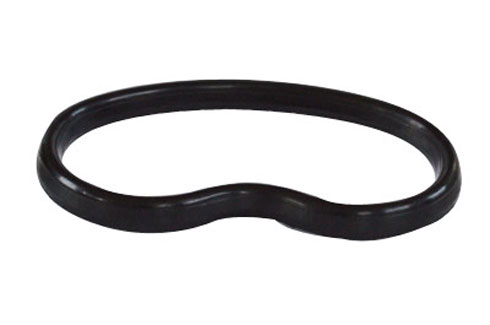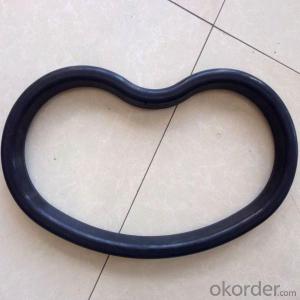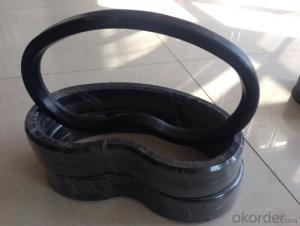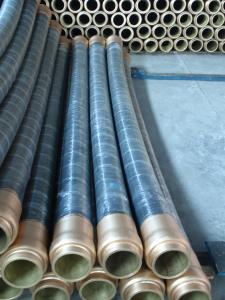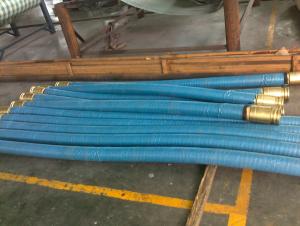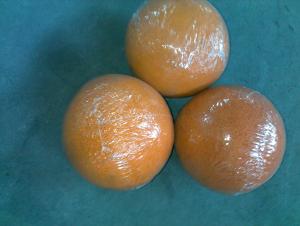Kidney Seal Ring DN180
- Loading Port:
- China Main Port
- Payment Terms:
- TT OR LC
- Min Order Qty:
- -
- Supply Capability:
- -
OKorder Service Pledge
OKorder Financial Service
You Might Also Like
Including: 1) Wear-resisting Board andCutting ink for Schwing, Putzmeister, Sany, Zoomlion, Kyokuto
2) Seal Ring/ Gasket for Schwing, Putzmeister, Sany
3) Schwing Kidney 10029138
4) Pipe Clean-out Accessories: Sponge ball, Sponge Column, Cleaningpiston
5) Conveying Cylinder for Schwing, Putzmeister
Products:
1) Rubber hose
2) Putzmeister/ Schwing/ Zoomlion/ SermacRam Pistons
3) Putzmeister/ IHI/ Kyokuto/ Zoomlion/Sany Seperated Piston
4) Wear-resisting board and Cuts ink
5) Coupling and seal ring for Putzmeister,Schwing, Sany
6) ST52 steel pipe, elbow, reducer
7) Cleaning seriesand others- Q: How does a hopper agitator motor ensure consistent concrete mixing?
- A hopper agitator motor ensures consistent concrete mixing by providing a continuous and powerful agitation motion within the hopper. This motion helps to break up any clumps or aggregates in the concrete mix, ensuring that all components are evenly distributed. The consistent agitation also helps to prevent settling or segregation of the mixture, resulting in a uniform and well-mixed concrete batch.
- Q: What is the difference between concrete pump and ground pump?
- The pump is easy to move and flexible, but generally limited to the length of the boom by 60-70m. The ground pump is not limited by height, but it needs to be connected with the conveying pipe, which is of poor flexibility
- Q: What are the performance characteristics of concrete pump?
- Adopt triple pump, open system, hydraulic circuit, without interference, system operation
- Q: Are there any specific tools or equipment required for the installation of concrete pump spare parts?
- Yes, there are specific tools and equipment required for the installation of concrete pump spare parts. Some of these tools include: 1. Wrenches and sockets: These are used to loosen and tighten bolts and nuts during the installation process. 2. Hydraulic jacks: Hydraulic jacks are necessary for lifting heavy parts of the concrete pump to provide easy access for installation. 3. Crane or hoist: In cases where the parts are extremely heavy, a crane or hoist may be required to lift and position them correctly. 4. Torque wrench: This tool is essential for tightening bolts to the correct torque specifications, ensuring a secure installation. 5. Grease gun: Lubrication is important for smooth operation of moving parts, so a grease gun is used to apply grease to specific components during installation. 6. Measuring tools: Measuring tapes or rulers are necessary to ensure accurate positioning and alignment of the spare parts. 7. Safety equipment: Safety goggles, gloves, and other protective gear should be worn during the installation process to prevent injuries. It is important to note that the specific tools and equipment required may vary depending on the type and complexity of the concrete pump and its spare parts. It is always recommended to consult the manufacturer's instructions or seek professional assistance to ensure proper installation.
- Q: How can a malfunctioning hydraulic motor affect the pumping process?
- A malfunctioning hydraulic motor can significantly affect the pumping process in several ways. Firstly, it may not be able to generate enough power or torque to drive the pump effectively, resulting in reduced pumping capacity or even complete failure. Secondly, the malfunctioning motor can cause irregular or inconsistent fluid flow, leading to an inefficient pumping process and decreased overall performance. Additionally, it can result in excessive heat generation, which may cause damage to the motor and other components of the hydraulic system. Overall, a malfunctioning hydraulic motor can disrupt the pumping process, leading to decreased efficiency, reduced output, and potential system damage.
- Q: How can one store and handle concrete pump spare parts to maintain their quality?
- To maintain the quality of concrete pump spare parts, it is crucial to store and handle them properly. Firstly, these spare parts should be stored in a clean and dry environment, away from moisture and direct sunlight. They should also be protected from dust and debris by using suitable covers or packaging. Additionally, it is important to handle them with care, avoiding any rough or improper handling that could cause damage. Regular inspection and maintenance of the spare parts should also be conducted to identify any signs of wear or corrosion, ensuring they are in optimal condition when needed for use.
- Q: Are there any specific guidelines for the installation of control panels or electronic components in concrete pump spare parts?
- Yes, there are specific guidelines for the installation of control panels or electronic components in concrete pump spare parts. When installing control panels or electronic components in concrete pump spare parts, it is important to consider the following guidelines: 1. Protection from Moisture: Concrete pump spare parts are exposed to moisture, which can be detrimental to electronic components. It is advisable to install control panels or electronic components in waterproof or moisture-resistant enclosures to prevent damage from water or humidity. 2. Vibration and Shock Absorption: Concrete pump spare parts are subject to vibration and shock during operation. To prevent damage to control panels or electronic components, it is recommended to use shock-absorbing mounts or vibration-resistant enclosures to minimize the impact of these forces. 3. Temperature Control: Concrete pump spare parts can be exposed to extreme temperatures, both hot and cold. It is crucial to ensure that control panels or electronic components are installed in a temperature-controlled environment. This may involve using insulation or cooling systems to maintain a suitable operating temperature range. 4. Wiring and Connections: Proper wiring and connections are essential for the functioning of control panels or electronic components. It is important to follow the manufacturer's instructions and guidelines for wiring, ensuring that connections are made securely and that proper insulation and protection are provided to prevent short circuits or electrical hazards. 5. Accessibility and Maintenance: Control panels or electronic components should be installed in a manner that allows easy accessibility for maintenance and repairs. It is recommended to leave enough space around the components for easy inspection, servicing, and replacement if necessary. By adhering to these guidelines, the installation of control panels or electronic components in concrete pump spare parts can be done in a manner that ensures their long-term functionality and durability.
- Q: What is the first generation pumping technology of concrete pump?
- Electronically controlled reversing technology, PLC control solenoid valve reversing to achieve the pump, S pipe distribution of alternating direction
- Q: How do I troubleshoot common problems with concrete pump spare parts?
- To troubleshoot common problems with concrete pump spare parts, you can start by carefully inspecting the spare parts for any signs of damage or wear. Check if there are any loose connections, leaks, or blockages. Additionally, ensure that the spare parts are correctly installed and aligned. It's essential to refer to the manufacturer's manual or guidelines to understand the correct usage and troubleshooting steps specific to your concrete pump spare parts. If the issue persists, it may be necessary to consult a professional or contact the manufacturer for further assistance.
- Q: How often should hydraulic oil filters be replaced in a concrete pump?
- The replacement frequency of hydraulic oil filters in a concrete pump is determined by several factors, such as operating conditions, oil type, and manufacturer recommendations. It is generally advised to replace these filters every 500 to 1000 operating hours or every 6 to 12 months, depending on which comes first. However, it is crucial to refer to the concrete pump's operation manual or the manufacturer's guidelines to determine the exact replacement interval for the hydraulic oil filters. Monitoring the filter's condition regularly and conducting routine maintenance checks can also aid in identifying the need for an earlier filter replacement than the recommended interval.
Send your message to us
Kidney Seal Ring DN180
- Loading Port:
- China Main Port
- Payment Terms:
- TT OR LC
- Min Order Qty:
- -
- Supply Capability:
- -
OKorder Service Pledge
OKorder Financial Service
Similar products
Hot products
Hot Searches
Related keywords
